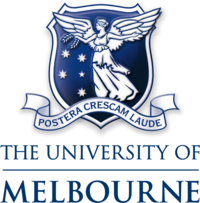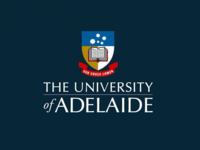
How do I become a medical practitioner?
Bachelor of Medical Studies / Doctor of Medicine
- There are no mandated entry requirements.


Doctor of Medicine
- There are no mandated entry requirements.








Bachelor of Biomedical Science
- There are no mandated entry requirements.








Related occupations
Medical Laboratory Technician
A Medical Laboratory Technician performs tests on bodily fluids and tissues to assist in diagnosing medical conditions while maintaining patient confidentiality.
Laboratory Attendant
A Laboratory Attendant performs various tasks in medical or research labs, assisting staff, collecting samples, and preparing reports while ensuring safety and accuracy.
Laboratory Technician
A Laboratory Technician operates specialist equipment in medical or research labs, conducting tests and assisting with research while ensuring accuracy and safety.
Laboratory Assistant
A Laboratory Assistant conducts tests and collects samples in scientific settings, ensuring accuracy, safety, and effective teamwork while using specialised equipment.
Laboratory Supervisor
A Laboratory Supervisor manages lab operations, ensures procedures are followed, meets targets, and oversees staff while maintaining safety and accuracy.
General Practitioner
A General Practitioner provides medical care by diagnosing conditions, treating patients, and referring them to specialists as needed.
Surgeon
A Surgeon performs surgical procedures for various medical issues, specialising in areas like emergency or heart surgery while collaborating with healthcare professionals.
Dermatologist
A Dermatologist specialises in diagnosing and treating skin issues, prescribing medications, and liaising with patients and other health professionals.
Psychiatrist
A Psychiatrist diagnoses and treats mental health issues, prescribing therapies and medications while collaborating with healthcare teams.
Paediatrician
A Paediatrician is a medical doctor who specialises in diagnosing and treating children, prescribing medications, and coordinating care.
Cardiologist
A Cardiologist is a medical doctor who diagnoses and treats heart conditions, monitoring patient progress and providing follow-up care.
Neurologist
A Neurologist diagnoses and treats nervous system disorders, conducting examinations and developing treatment plans to improve patients' quality of life.
Medical Laboratory Scientist
A Medical Laboratory Scientist performs tests on specimens to diagnose diseases, analysing samples and collaborating with healthcare professionals to ensure accurate patient care.
Medical Scientist
A Medical Scientist performs lab research and diagnostic tests to aid in disease diagnosis and treatment, collaborating with healthcare professionals.
Medical Researcher
A Medical Researcher advances healthcare by designing experiments, analysing data, and collaborating on clinical trials.
Immunologist
An Immunologist studies the immune system to diagnose disorders, develop new treatments, and improve vaccines for public health.
Geneticist
A Geneticist studies genes and heredity to analyse genetic disorders and develop treatments, conducting experiments and interpreting complex data.
Laboratory Scientist
A Laboratory Scientist conducts experiments, tests samples, and ensures quality control in labs, contributing to medical and scientific advancements.
Clinical Laboratory Technician
A Clinical Laboratory Technician performs vital tests and procedures to support patient diagnosis and treatment in healthcare.
Molecular Geneticist
Molecular Geneticists study genes at a molecular level, conducting experiments and analysing data to understand genetic mutations and develop therapeutic methods.
Epidemiologist
An Epidemiologist analyses disease patterns in populations, designs studies, and develops strategies to improve public health outcomes.
Medical Advisor
A Medical Advisor offers medical expertise to support healthcare products, overseeing trials, ensuring compliance, and disseminating information.
Laboratory Analyst
A Laboratory Analyst conducts tests and analyses on samples to ensure compliance with standards, while specialising in areas like chemistry or microbiology.
Laboratory Manager
A Laboratory Manager ensures efficient lab operations, manages staff and equipment, oversees budgets, and ensures compliance with safety and regulatory standards.
Endocrinologist
Endocrinologists diagnose and treat hormonal disorders, focusing on conditions like diabetes, thyroid imbalances, and infertility.
Medical Science Liaison
A Medical Science Liaison communicates scientific knowledge to healthcare professionals, supports clinical development, and offers insights on medical trends.
Career Medical Officer (CMO)
A Career Medical Officer provides comprehensive patient care, diagnoses conditions, manages treatment plans, and collaborates with healthcare teams.
Common questions
How much do Medical Practitioners earn?
Salaries for Medical Practitioners working in Australia start at $3,830 per week ($199,160 annually). Increase your earning capacity by obtaining post-graduate qualifications and becoming a specialist practitioner (eg, Surgeon, Allergist, Gynecologist, Oncologist, ENT Specialist).
What are the job opportunities for Medical Practitioners?
There are currently 42,000 General Medical Practitioners working in Australia. This does NOT include specialist doctors. This is a growing occupation and there is a significant shortage of qualified doctors in regional and remote areas of Australia.
How do I become a Medical Practitioner?
Becoming a registered Medical Practitioner generally takes 10 years of study including an internship. The steps are as follows:
- Obtaining a suitable Bachelor’s degree (eg, health science, pharmacy, nursing, human movement, science).
- Passing the Graduate Australian Medical School Admissions Test (GAMSAT).
- Completing a Doctor of Medicine (MD).
- Working as an intern at a hospital for at least one year.
- Obtaining general medical registration through the Medical Board of Australia.
Source: Australian Government Labour Market Insights 2023
Further reading


What can you do with a Diploma of Practice Management?
27th January 2022)

